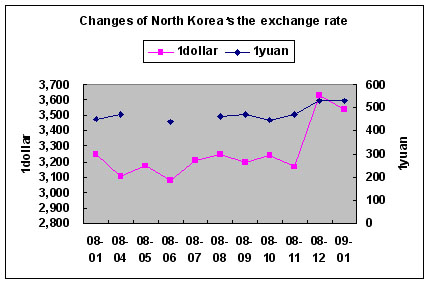Dreams of a North Korean Kim Yu Na
Daily NK
Yoo Gwan Hee, from South Pyungan in 2008
2/12/2009
One of the things people tend to notice about South Korea is the number of athletes who proudly represent the country on the international stage. Besides the Olympics or the Asian Games, a variety of international sporting events are held here. It is a good thing to have world-class athletes in a country, and Kim Yu Na, the figure-skating fairy, is just such a person these days in South Korea.
When people hear the story about Kim Yu Na, they almost always ask me, “Is there figure-skating in North Korea?” Of course! Although they may not be as well-known as the judo athlete Kye Soon Hee or the track star Jung Sung Ok, there are accomplished figure skaters, even professional teams, in North Korea.
In commemoration of Kim Jong Il’s birthday (February 16th), the “supreme holiday for the people,” the “Mt. Baekdu Cup International Figure-skating Celebration” has been held every year since February 1992.
After the “March of Tribulation” in the mid-1990s, North Korea ceased supporting most of the international events that it had been sponsoring, but has put on the “Mt. Baekdu Cup” celebrations without fail. 2009 heralds the 18th consecutive commemoration.
The “Mt. Baekdu Cup” celebration, in conformity with the rules of the International Skating Union (ISU), has four main categories–men’s and females’ singles, pairs skating, and ice dancing. Including participants from the North, the host country, athletes from Russia, Hungary, Belarus, Ukraine, and other former East European Communist nations, and a portion of other European countries also take part in the event.
The event has always been held at the “Pyongyang Skating Rink” in the Botongkang district in Pyongyang. Having opened in April 1982, it accommodates up to 6,000 people and is the largest ice rink in the country. It also opens to general Pyongyang citizens on holidays.
Figure skaters in North Korea are usually associated with the National Joint Athletics Team, the Pyongyang Athletics Team, and the Walmido Athletic Team. Most of them are Pyongang-born. Because skating rinks are not so common in North Korea and figure skating requires professional training, children from the Youth Physical School, who belong to the Pyongyang Skating Rink or the Pyongyang Locomotive Athletic Team Skating Rink, are chosen.
Among the trainers, some of them are former figure skaters, but others have dance backgrounds. Just as Kim Yu Na learned ballet to help with her “expressiveness,” North Korean figure skaters also learn to dance.
Reflecting the general reality of the education system in the North, figure skaters also mostly come from affluent homes. In order to train, they have to eat well, first and foremost, and have to be able to afford not only the necessary items for training, but also compensations to trainers, such as liquor, cigarettes, or means of living. In particular, before entering professional teams, parents are in charge of all costs, which is a difficult burden for average households.
The athletes lead group-based lives in the teams to which they belong. During training, if there is evidence of some kind of a flaw or poor results, then self-criticisms or ideological education is stressed.
Among North Korea’s figure skaters, none are as internationally renowned as South Korea’s Kim Yu Na. Looking at the individual rankings announced by the ISU on the 7th; the only ranked North Korean skaters are the pair Tae Won Hyuk-Lee Ji Hyang (the 83rd). The reason for their low ranking, apart from their actual skill, can be attributed to their participation in only one international competition sponsored by the ISU in the last three years.
Han Jung In, who was a flag-bearer alongside South Korean female speed skater Lee Bora in the 2006 Torino Winter Olympic Games, was also a famous male figure skater in North Korea. As for female skaters, there is Kim Young Sook, ranked 96th in the world last year.
The background music used by North Korean figure skaters is always revolutionary song. Consequently, the audience at the international competition fails to understand the music. The athletes who participate in the “Mt. Baekdu Cup” celebration have to select songs that demonstrate devotion to and adoration for Kim Jong Il. Sometimes, the lyrics of songs, such as “February is spring,” a very well-known song admiring Kim Jong Il, are removed and only the tunes are used.
Wanting a star such as Kim Yu Na to emerge from North Korea is something that may have to wait until the next generation. Asking North Korean children, who struggle for survival, to show sporting potential is most unfair.
In Pyongyang nowadays, countless students from pre-school to high school are preparing for a commemorative performance, “Arirang.” While Kim Yu Na is realizing her dream of being the world’s top figure skater, Pyongyang’s children have to prepare several months for a performance, the purpose of which is to promote the regime and earn foreign currency.
I hope the day comes soon when North Korean children can follow their dreams, like Kim Yu Na, without any political or economic restraint.

